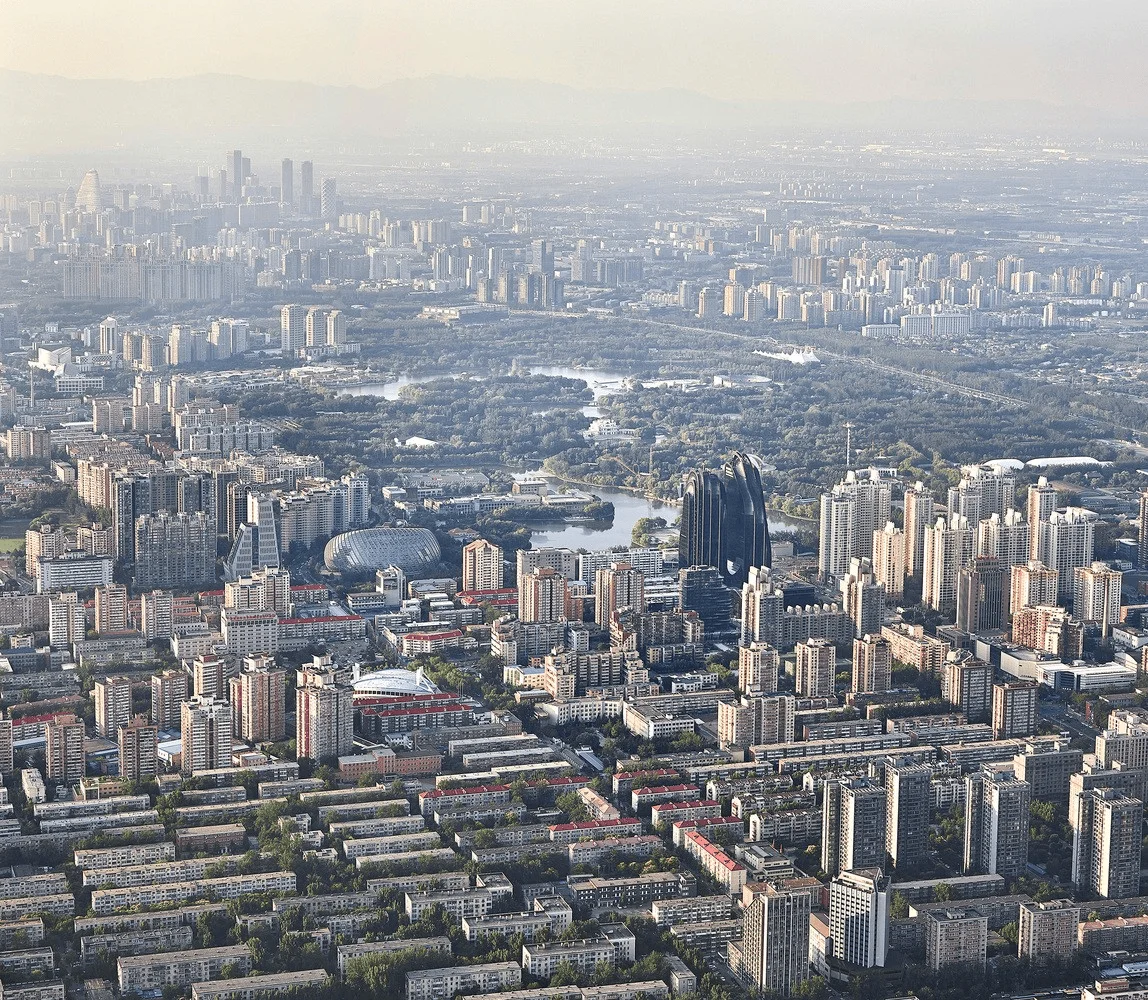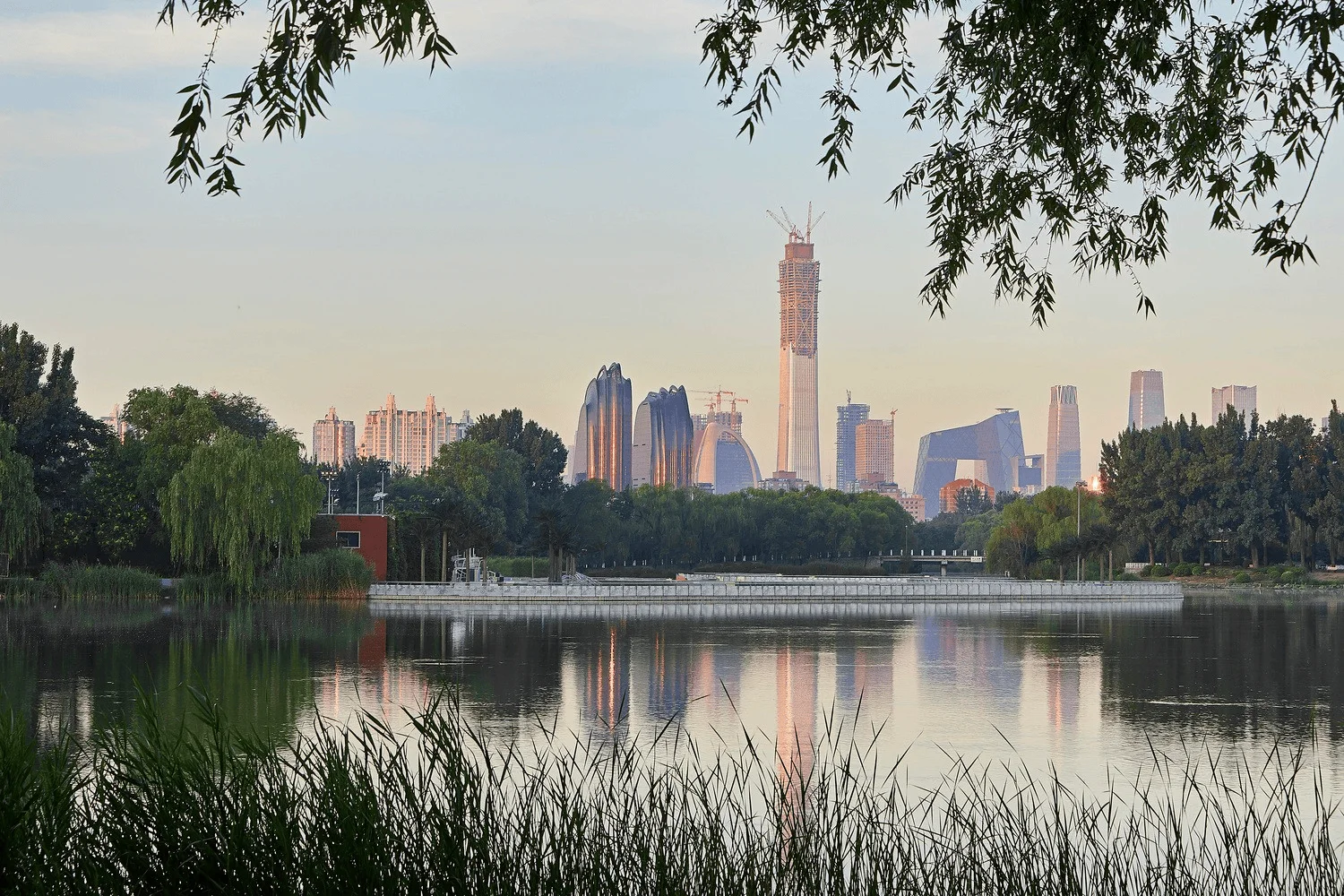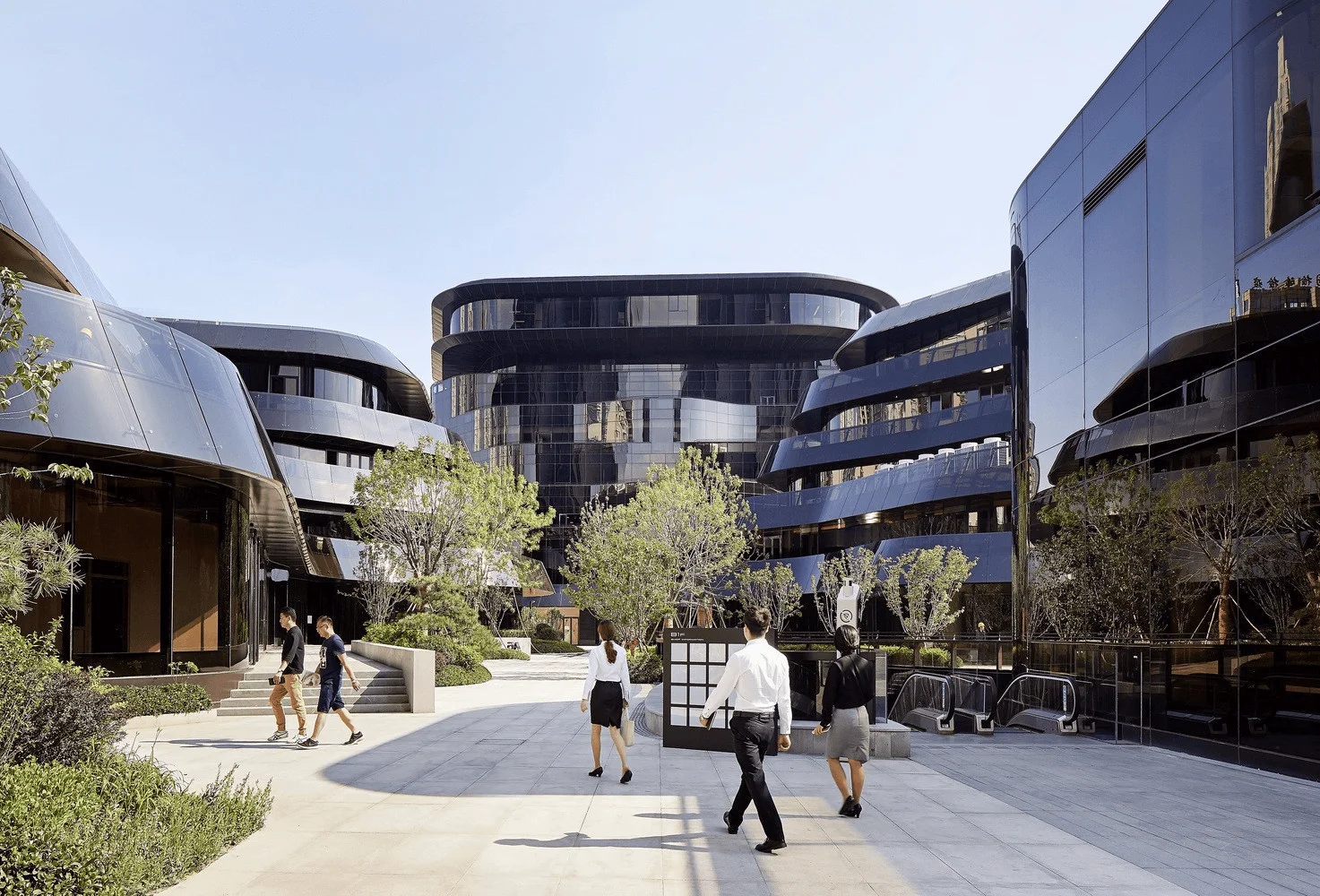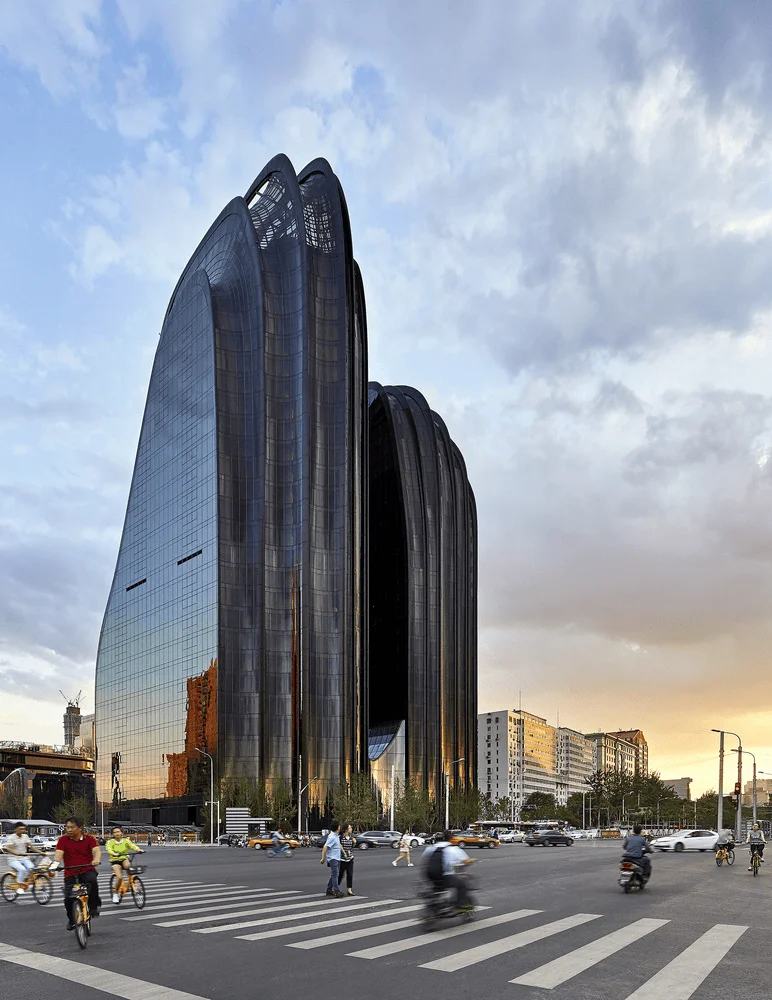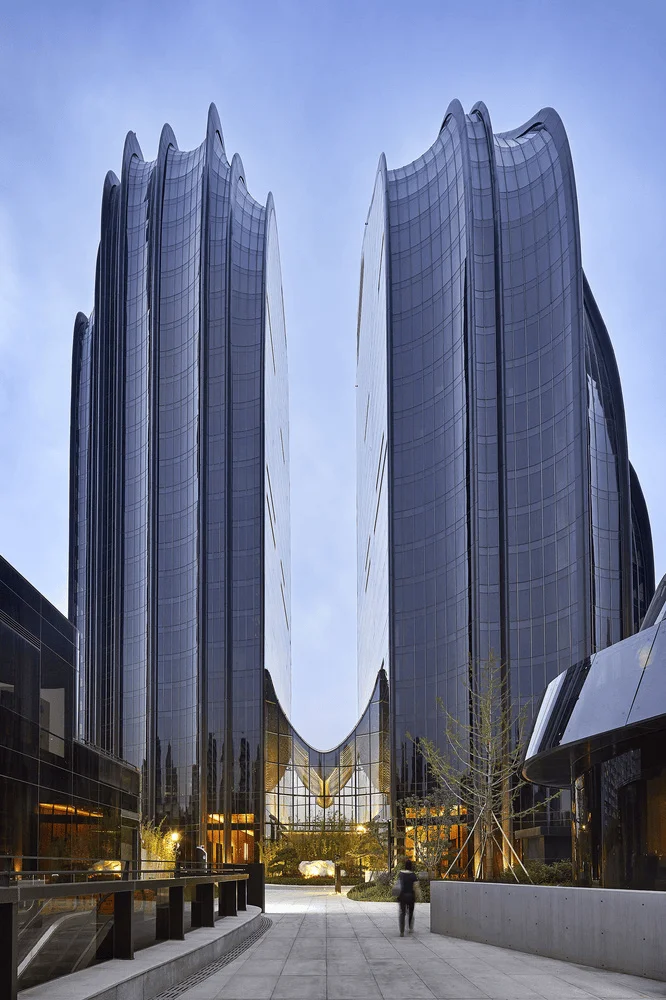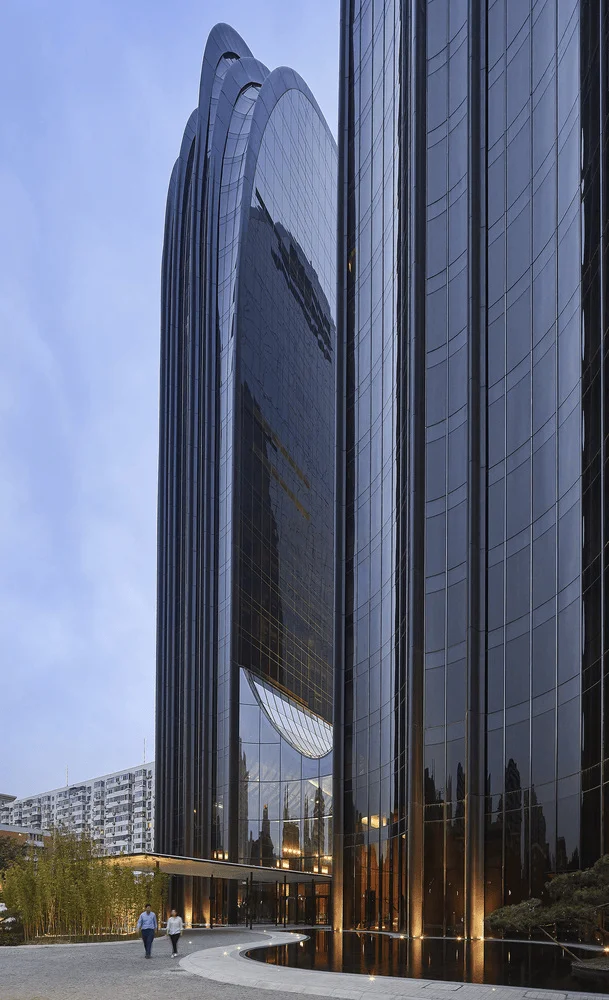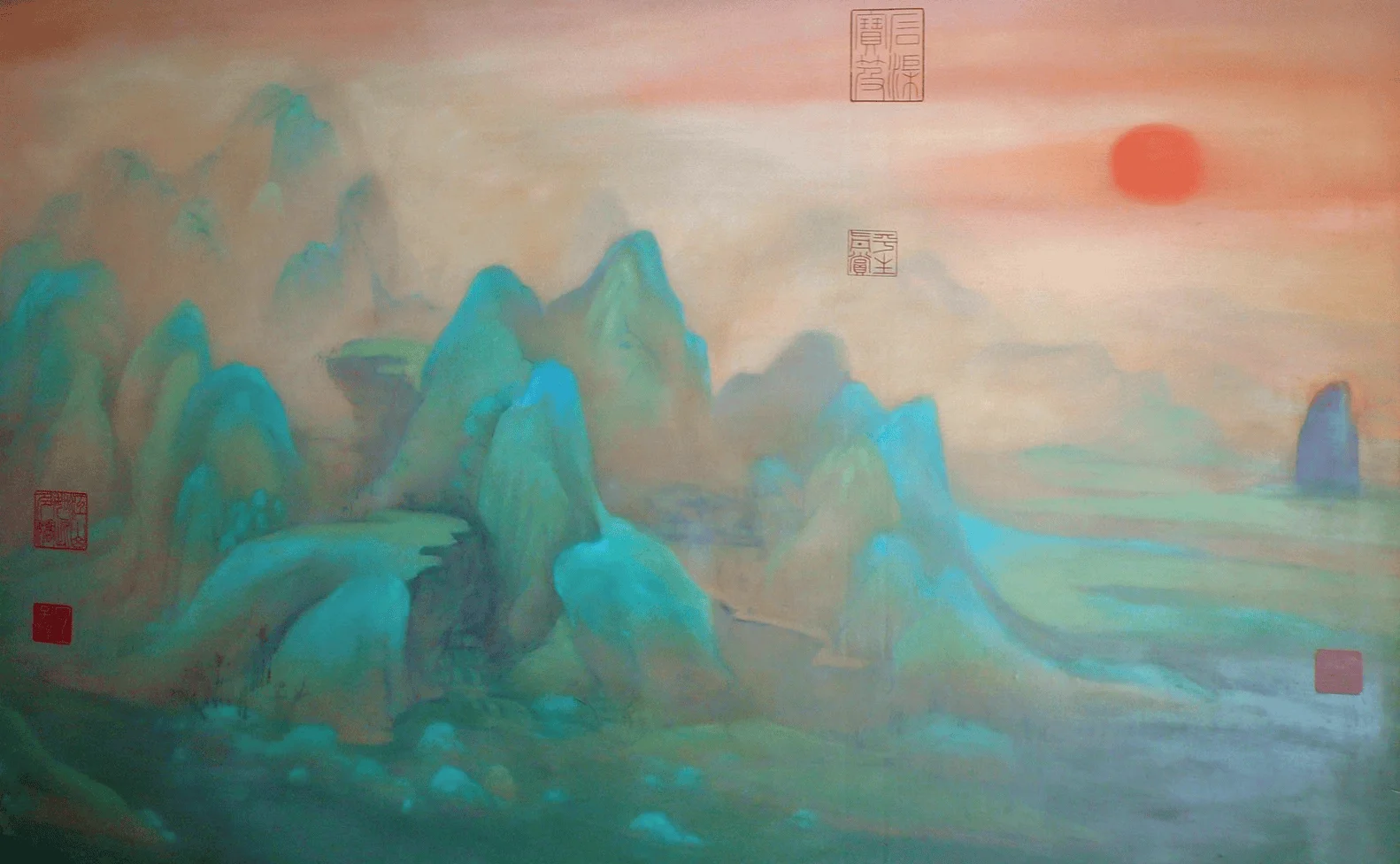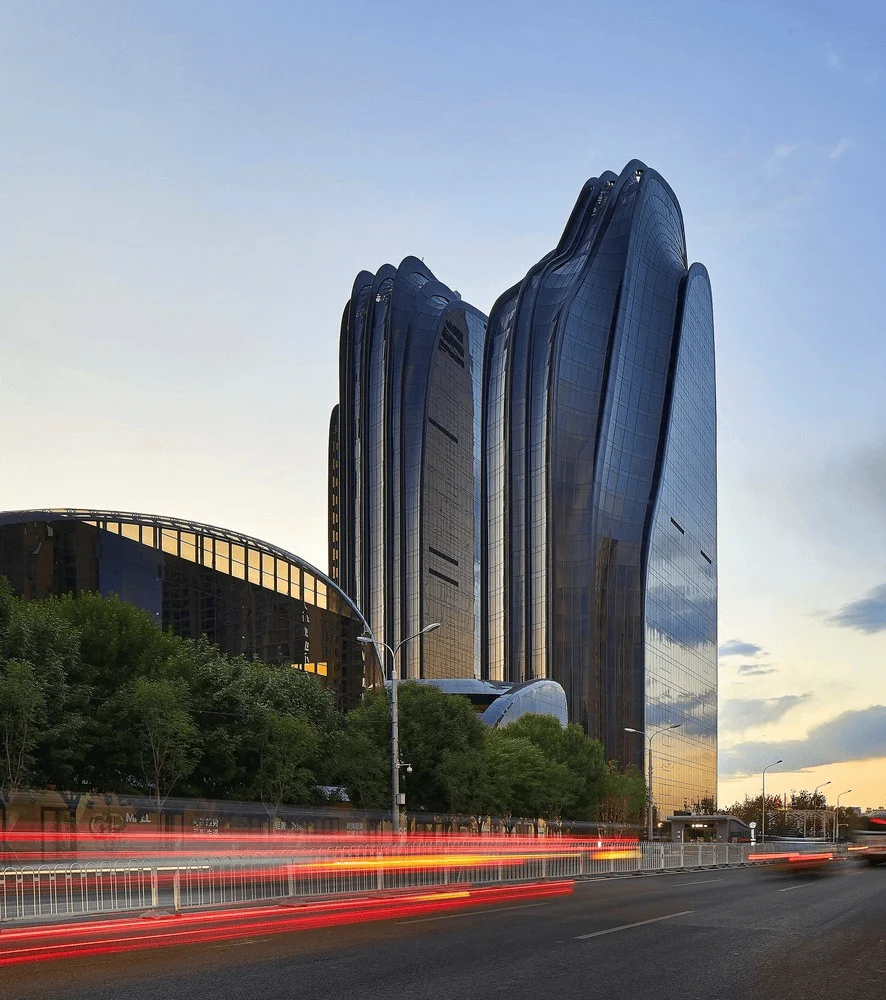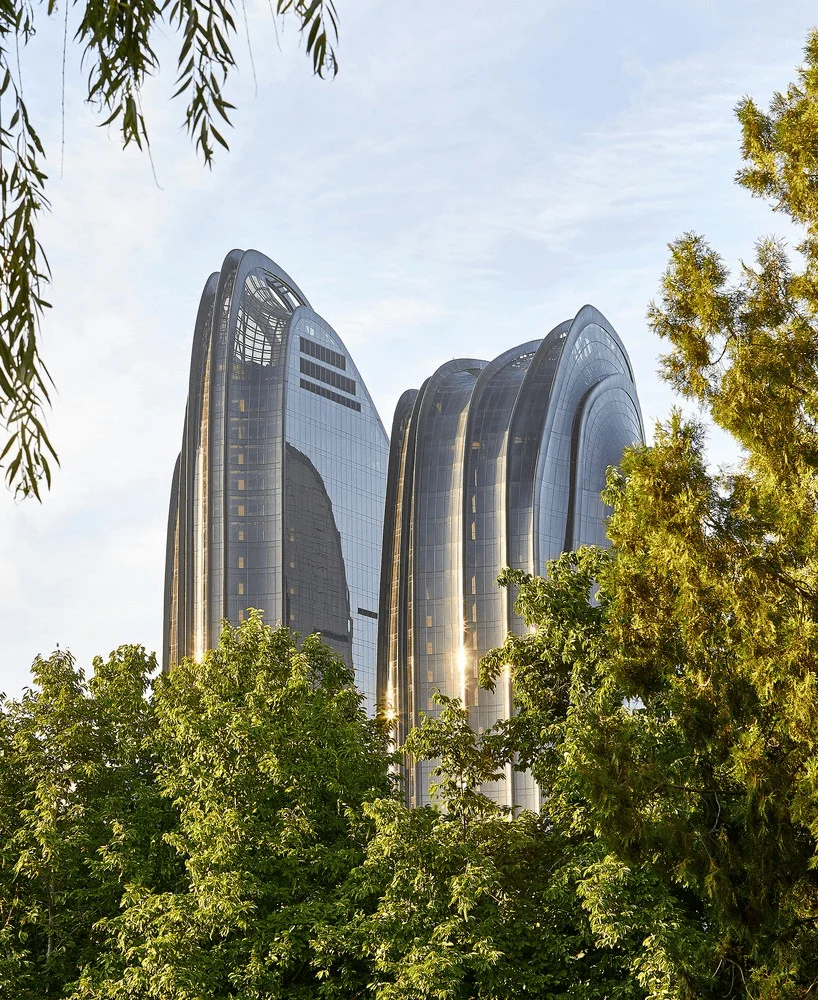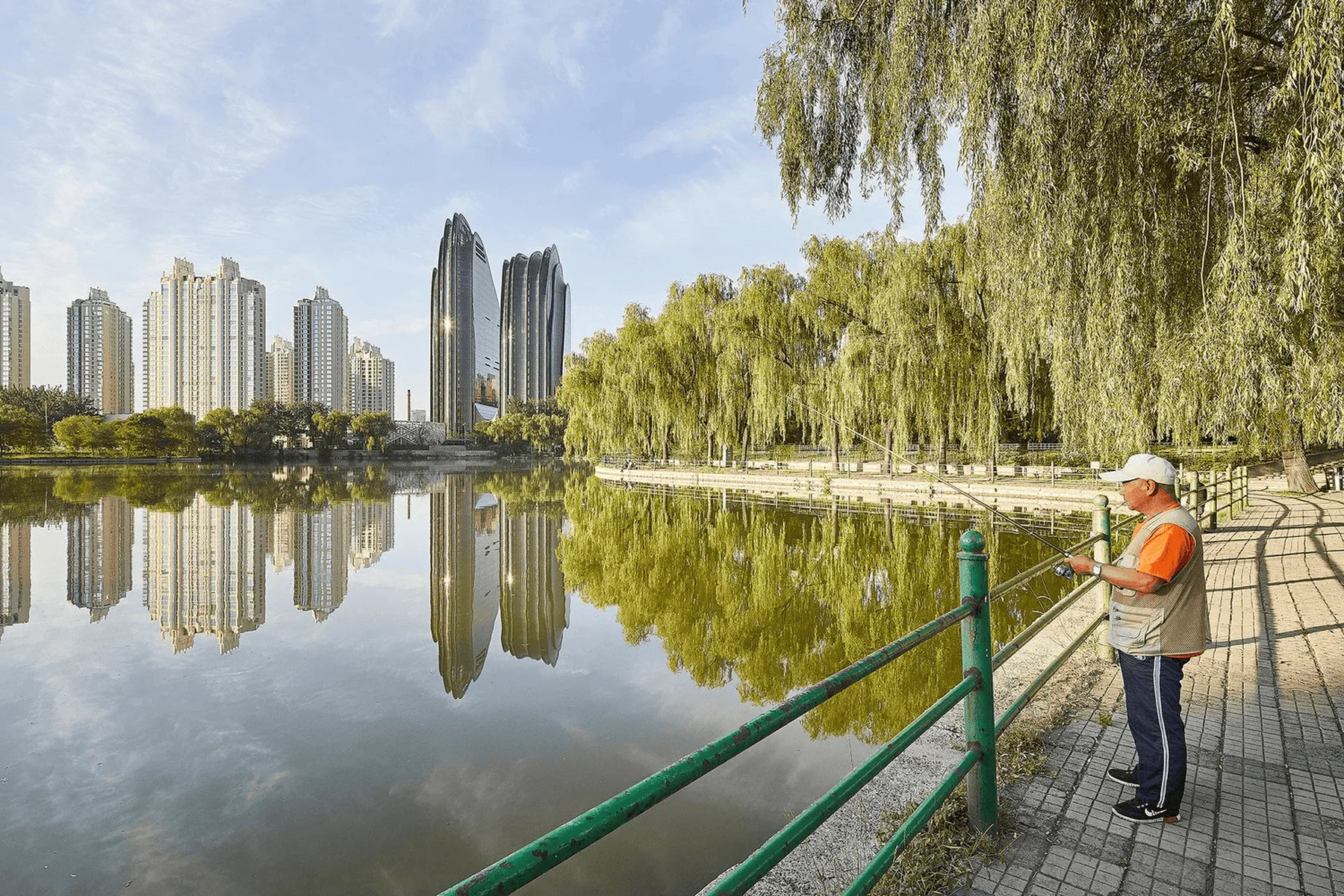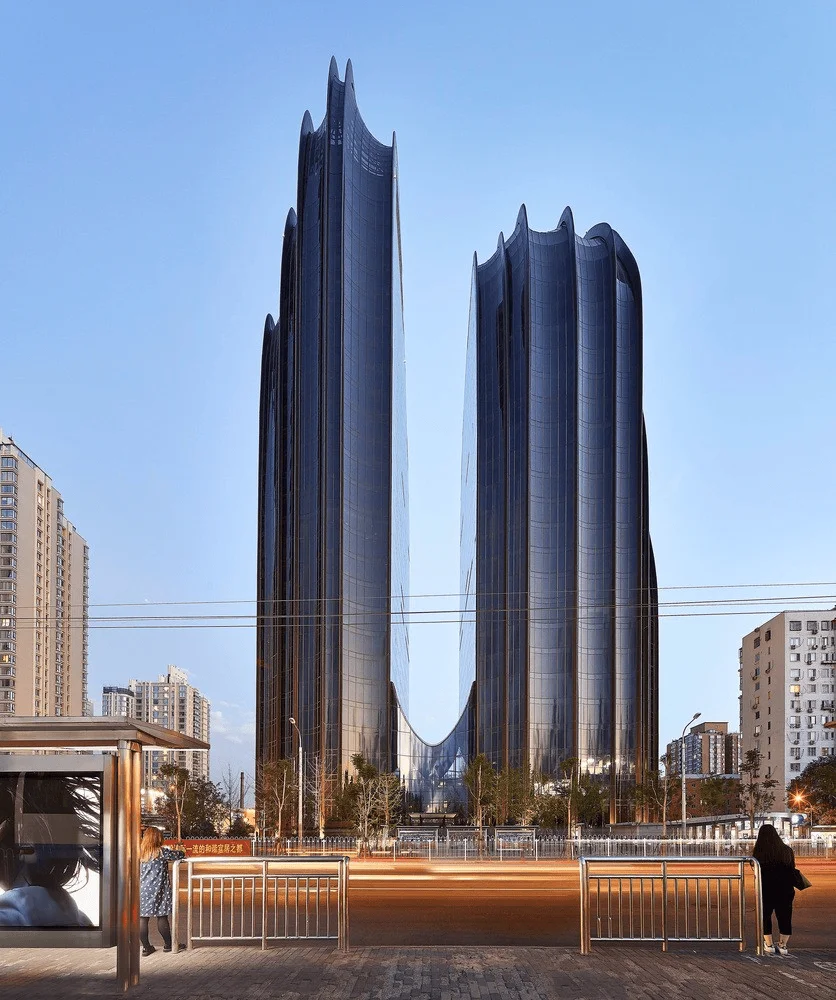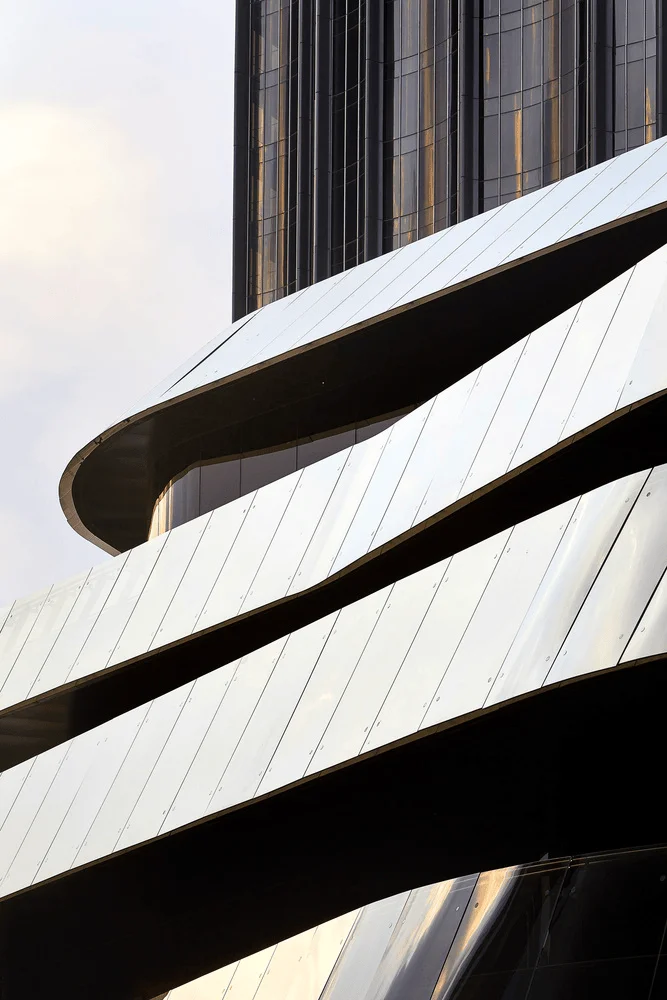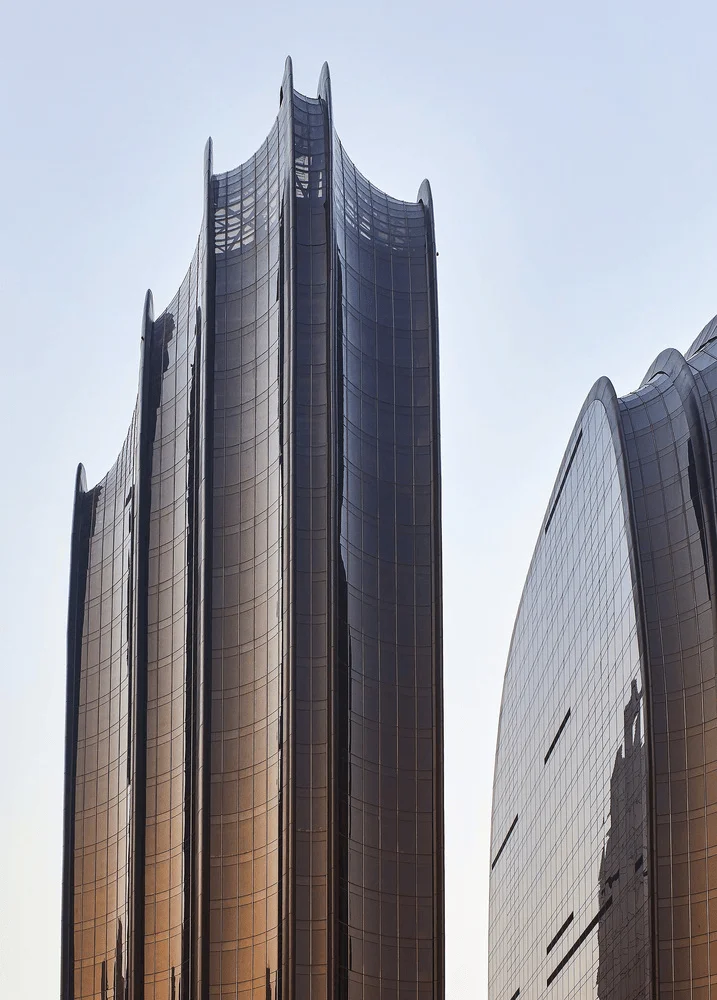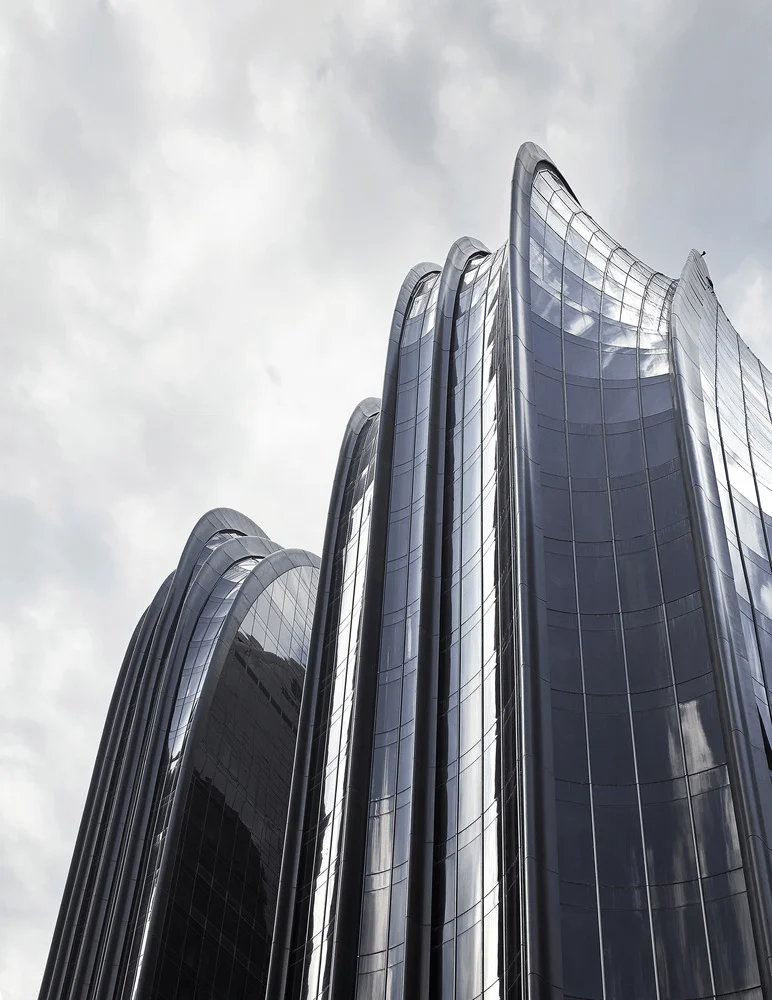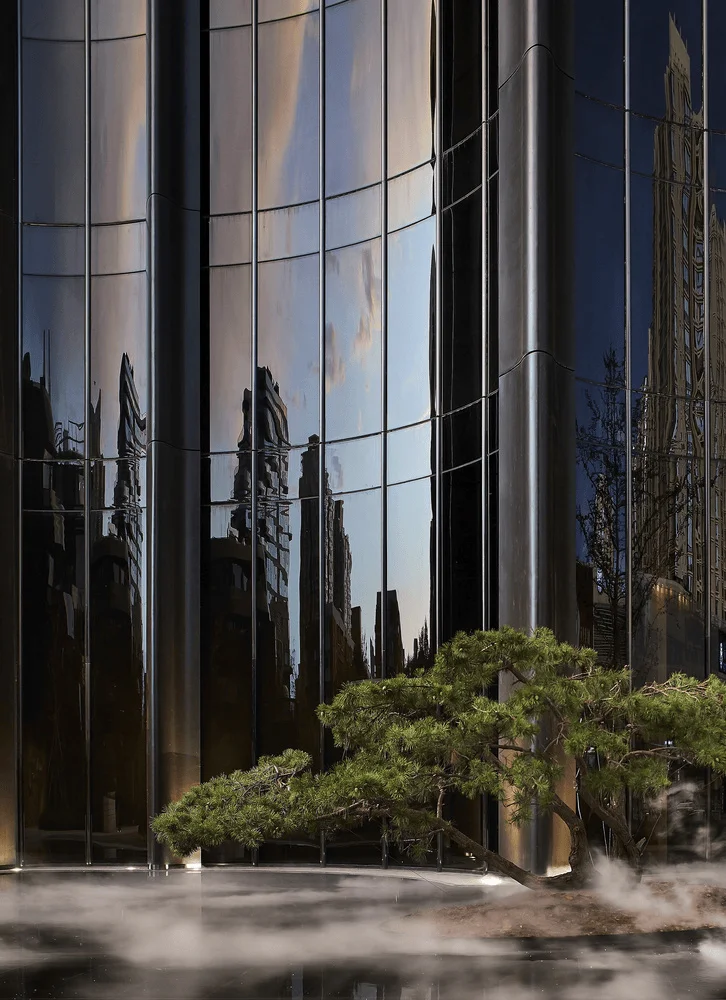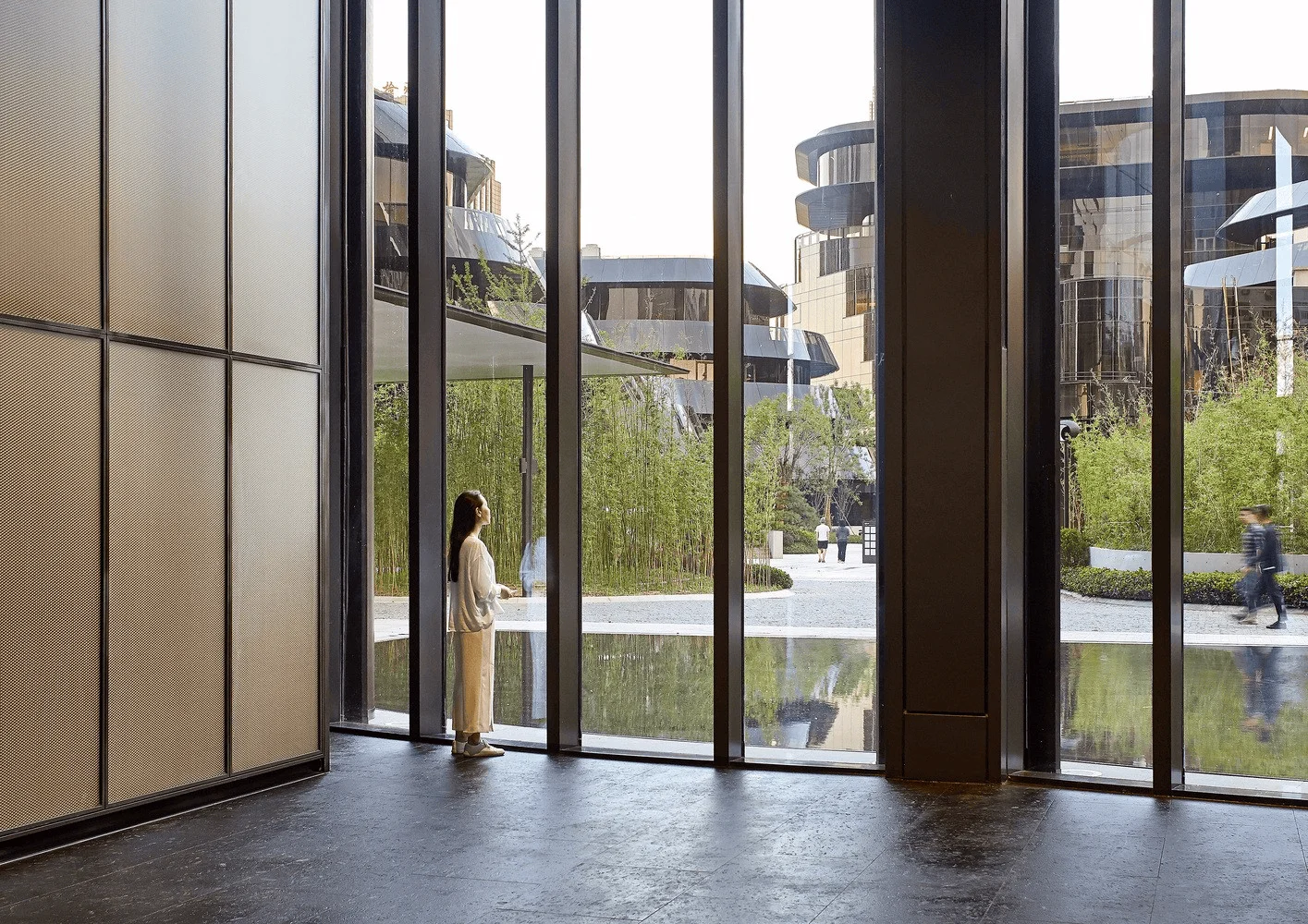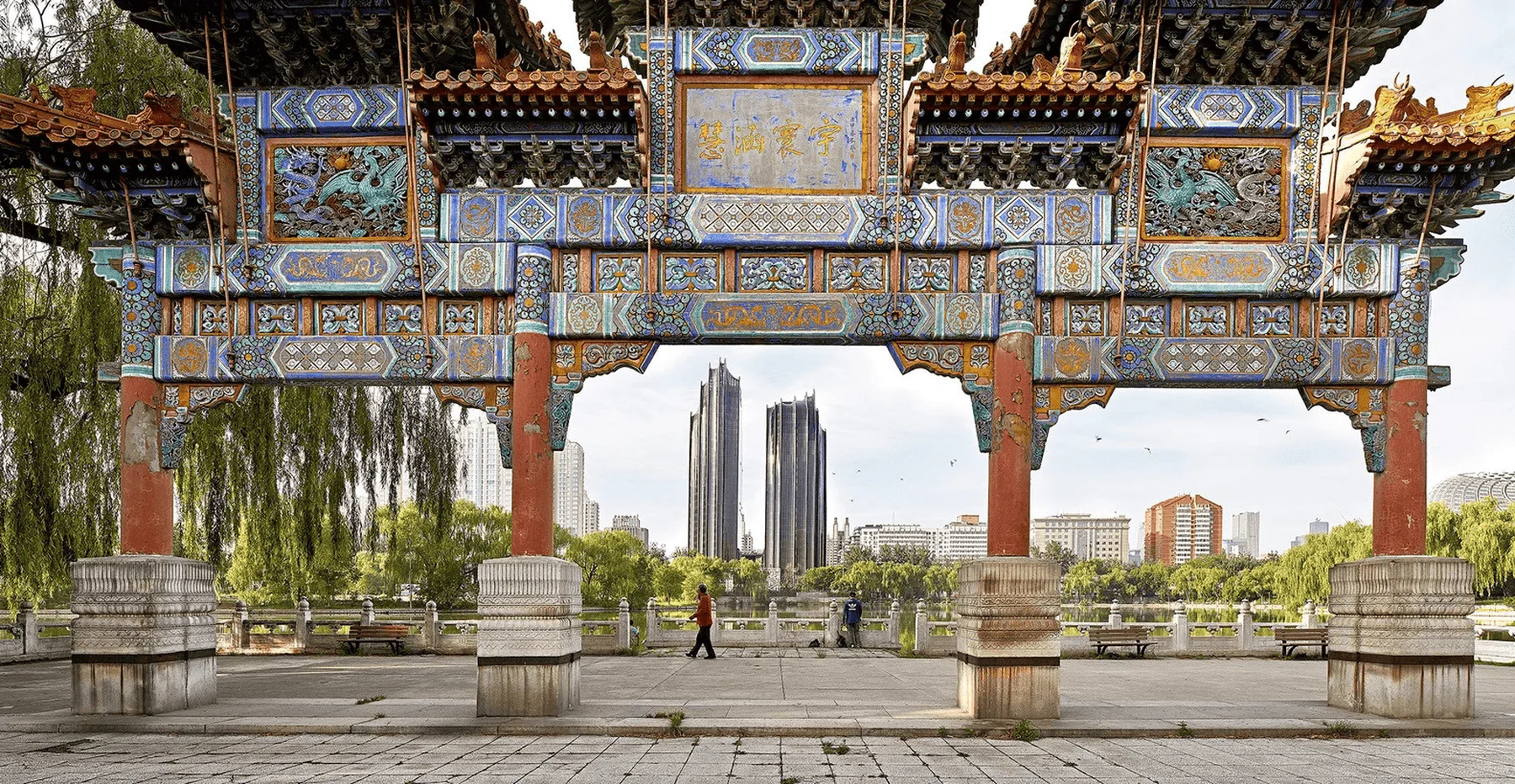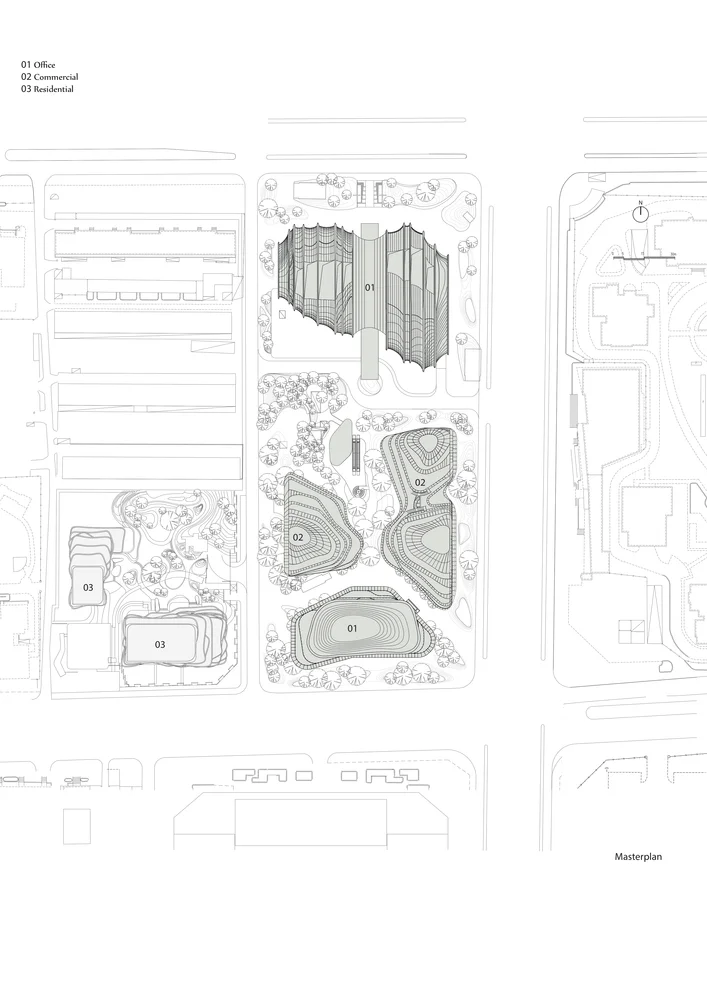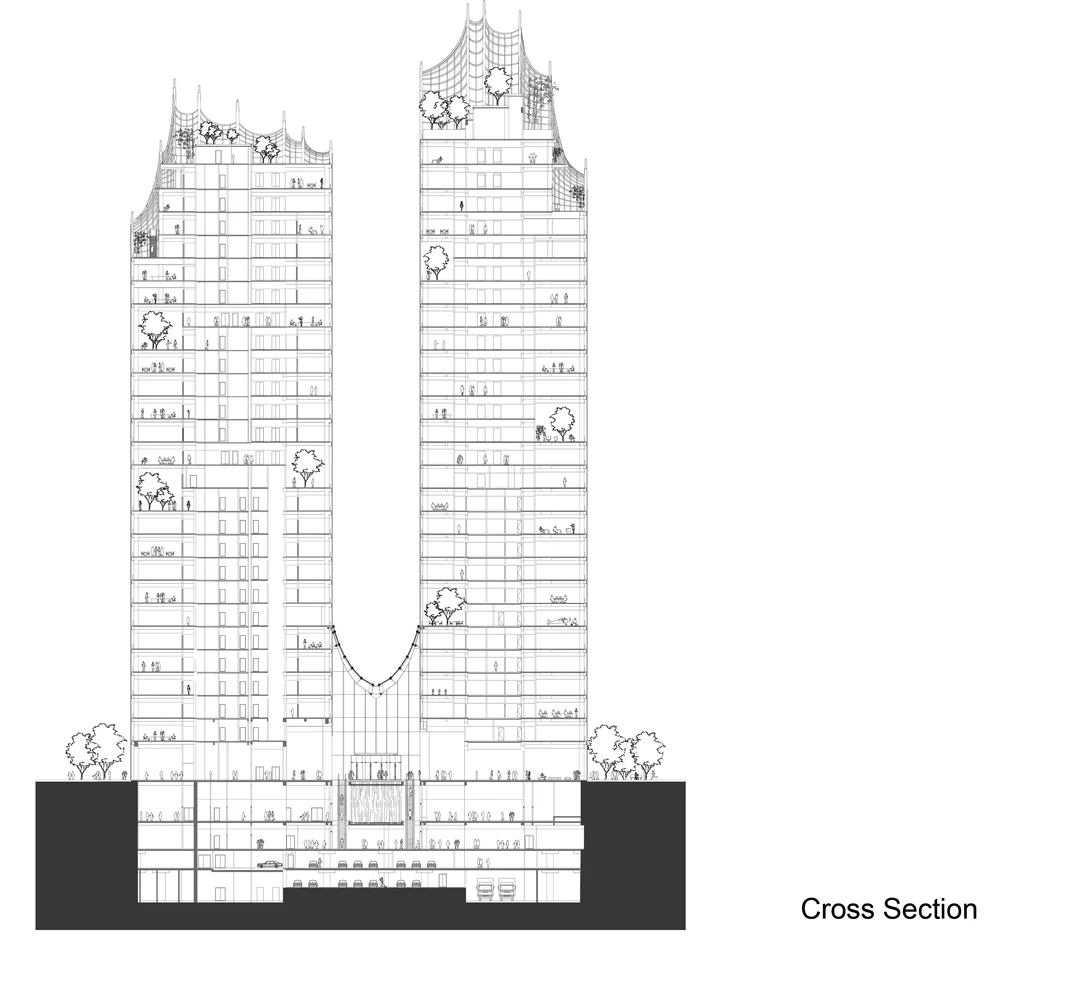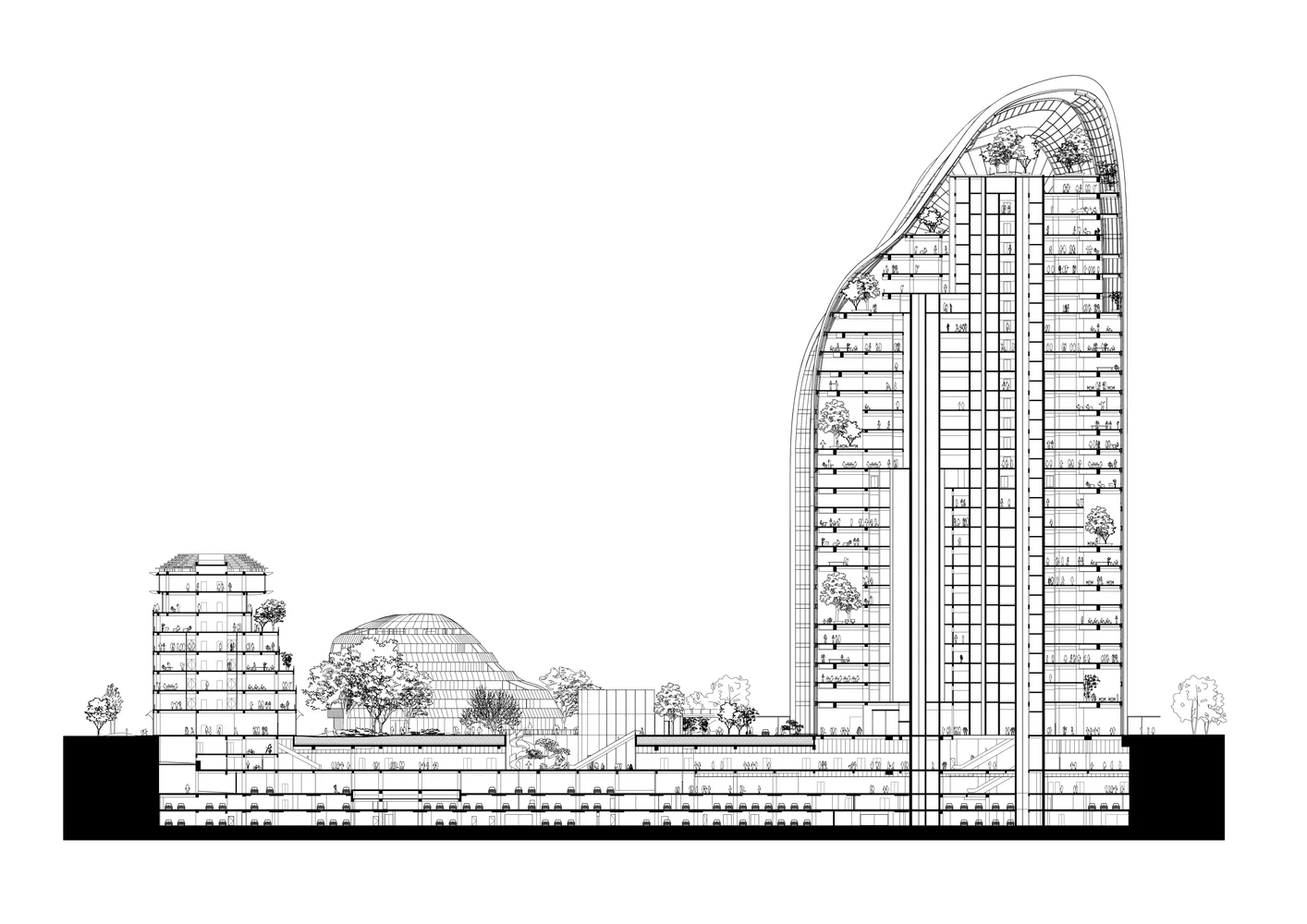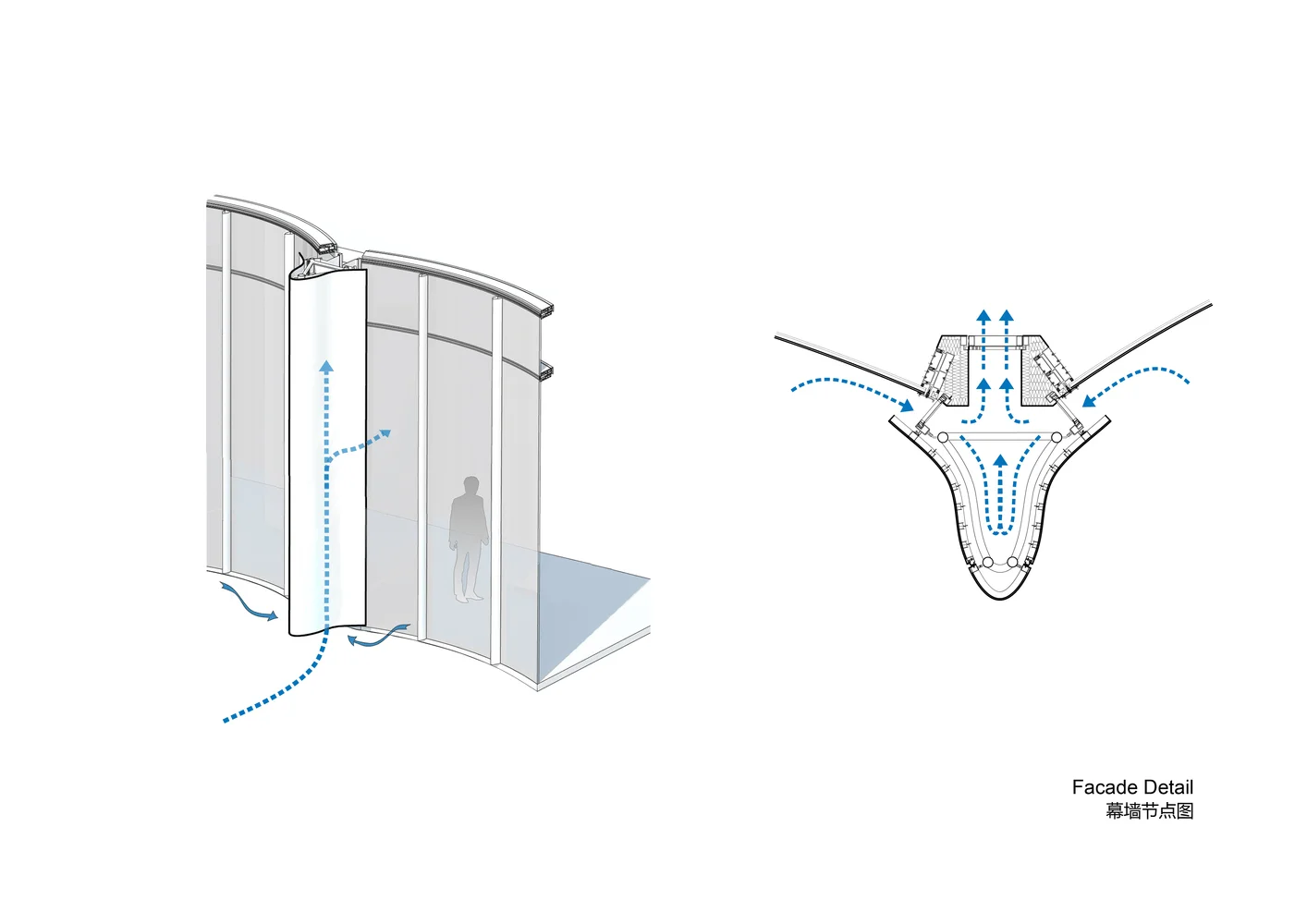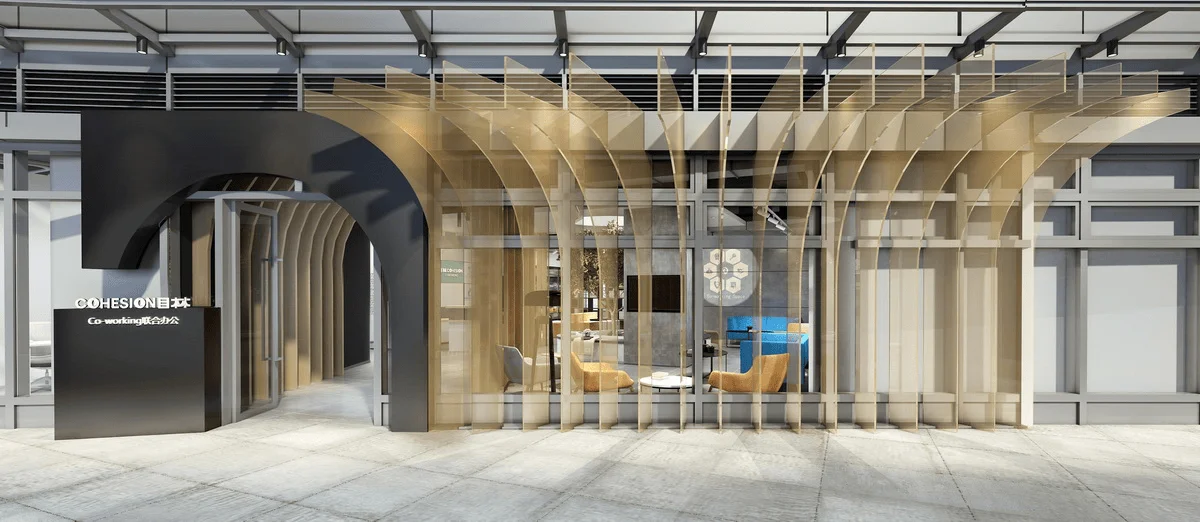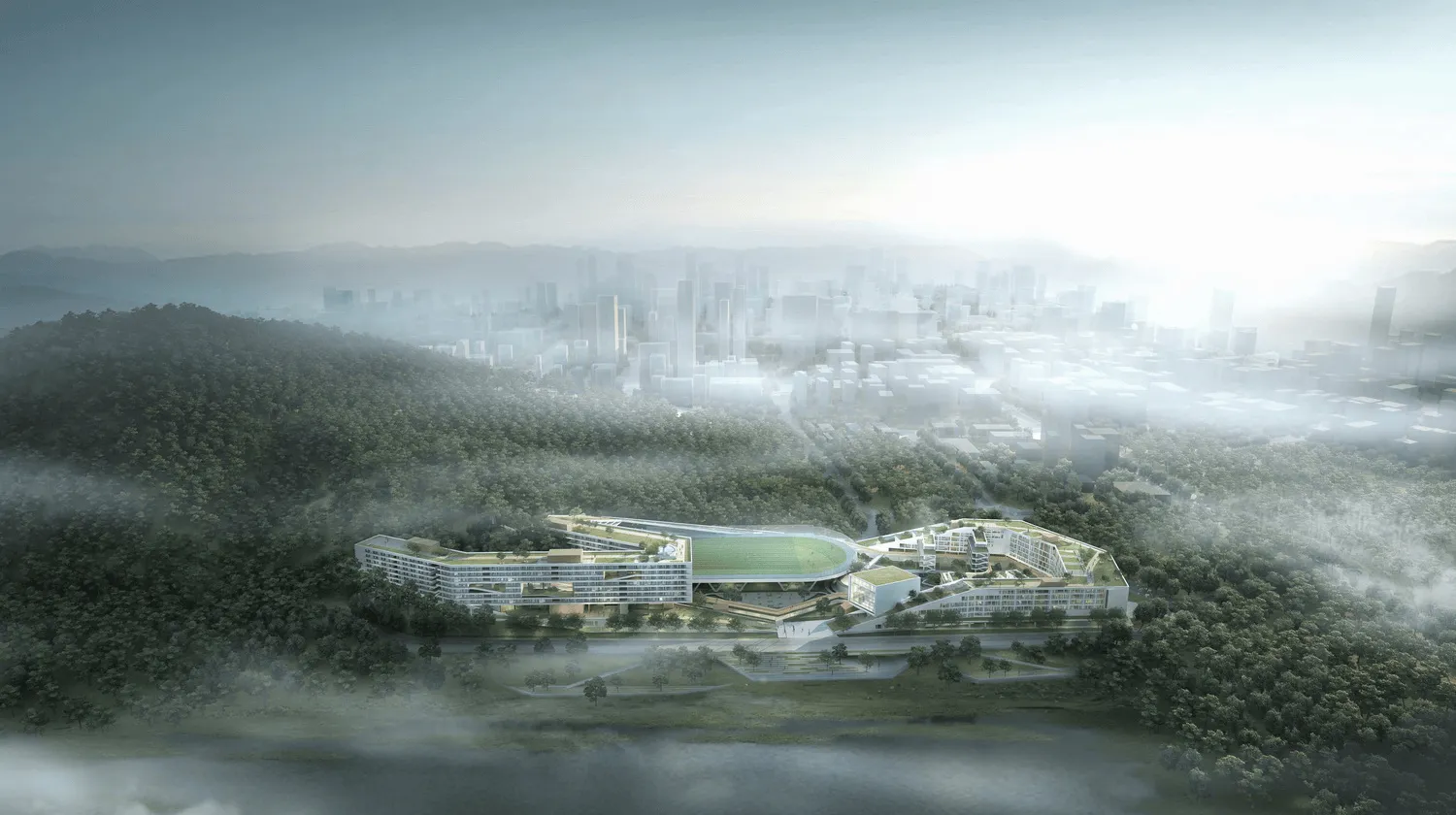MAD Architects, led by Ma Yansong, has completed the “Ink and Wash Landscape” – Chaoyang Park Plaza and Armani Residences, after six years of dedicated work. Situated on the south side of Beijing’s Chaoyang Park, the complex spans approximately 220,000 square meters, comprising 10 buildings that rise and fall like an unfurling landscape painting, resembling a collection of bonsai trees. Unlike the modern buildings surrounding New York’s Central Park, which emphasize boundary enclosure, this futuristic architectural ensemble in Beijing underscores the extension and penetration of nature into the city, “naturalizing” man-made structures. It employs the “borrowed scenery” technique from traditional Chinese gardens, blurring the line between Chaoyang Park and the city, creating a harmonious blend of natural and artificial landscapes. The project aims to achieve a seamless integration of nature and architecture, blurring the line between the two. It is a harmonious blend of natural and artificial landscapes, achieving a sense of unity between human and nature. The design draws inspiration from Chinese landscape art, recreating a large-scale architectural relationship in the heart of the city, reviving natural forms and spaces such as “peaks, ravines, streams, stones, valleys, and forests.” The asymmetric twin office towers on the north side of the site, adjacent to the park’s lake, resemble two mountain peaks emerging from the water. The central atrium connecting the towers features a glass roof structure supported by cables, creating a bright and transparent space. Several smaller-scale low-rise commercial and office buildings are clustered around the towers like rocks eroded by a mountain stream, creating a hidden yet open urban garden. The two independent Armani multi-story apartment buildings on the southwest of the site continue the concept of “sky gardens,” with staggered designs offering residents enhanced sunlight and opportunities for close encounters with nature. The overall environment is characterized by smooth, curved surfaces in black and white, creating a serene and mysterious atmosphere, distinct from the bustling urban environment. Traditional elements such as pine trees, bamboo, rocks, and pools are incorporated into the black architecture, hinting at a deeper connection with classical spaces. Renowned Japanese graphic designer Kenya Hara personally designed the signage and wayfinding system for the project, integrating simplicity and sophistication into the overall design. The Chaoyang Park Plaza received LEED Gold Certification from the U.S. Green Building Council, demonstrating the project’s commitment to sustainability. The “landscape” concept is also reflected in technical innovations. The vertical ridges protruding from the double tower facades house ventilation and filtration systems that extend to each floor, allowing natural air to circulate throughout each space. The water feature on the south side of the towers, in addition to its aesthetic appeal, acts as a powerful cooling agent. Air flows through the water feature, along the ridges of the double towers, providing fresh and cool ventilation for the towers. The dark glass used in this globally tallest curved glass curtain wall building, not only allows natural light to permeate the building from all angles but also effectively reduces the heat generated by direct sunlight. Completed in Beijing’s Central Business District, surrounded by modern skyscrapers, the Chaoyang Park Plaza engages in a dialogue with the classical city of Beijing. The project reflects the philosophy of mutual spiritual interdependence between humans and nature, presenting a grand landscape garden layout. In the paintings by architectural historian Wang Mingxian, Chaoyang Park Plaza is juxtaposed within classical landscape paintings, exhibiting a harmonious blend. This contrasts with the discordant relationship it shares with the surrounding urban environment in the city. Ma Yansong reflects on this contrast, stating, “I don’t think this is our issue; the real question is when did the city’s original cultural context disappear? Chinese cities don’t need to follow in the footsteps of Western industrial civilization. Instead, they should strive to create a different type of city, a new city that can be compared in terms of spiritual culture to those classical cities imbued with Eastern natural philosophy and wisdom.”
Project Information:


